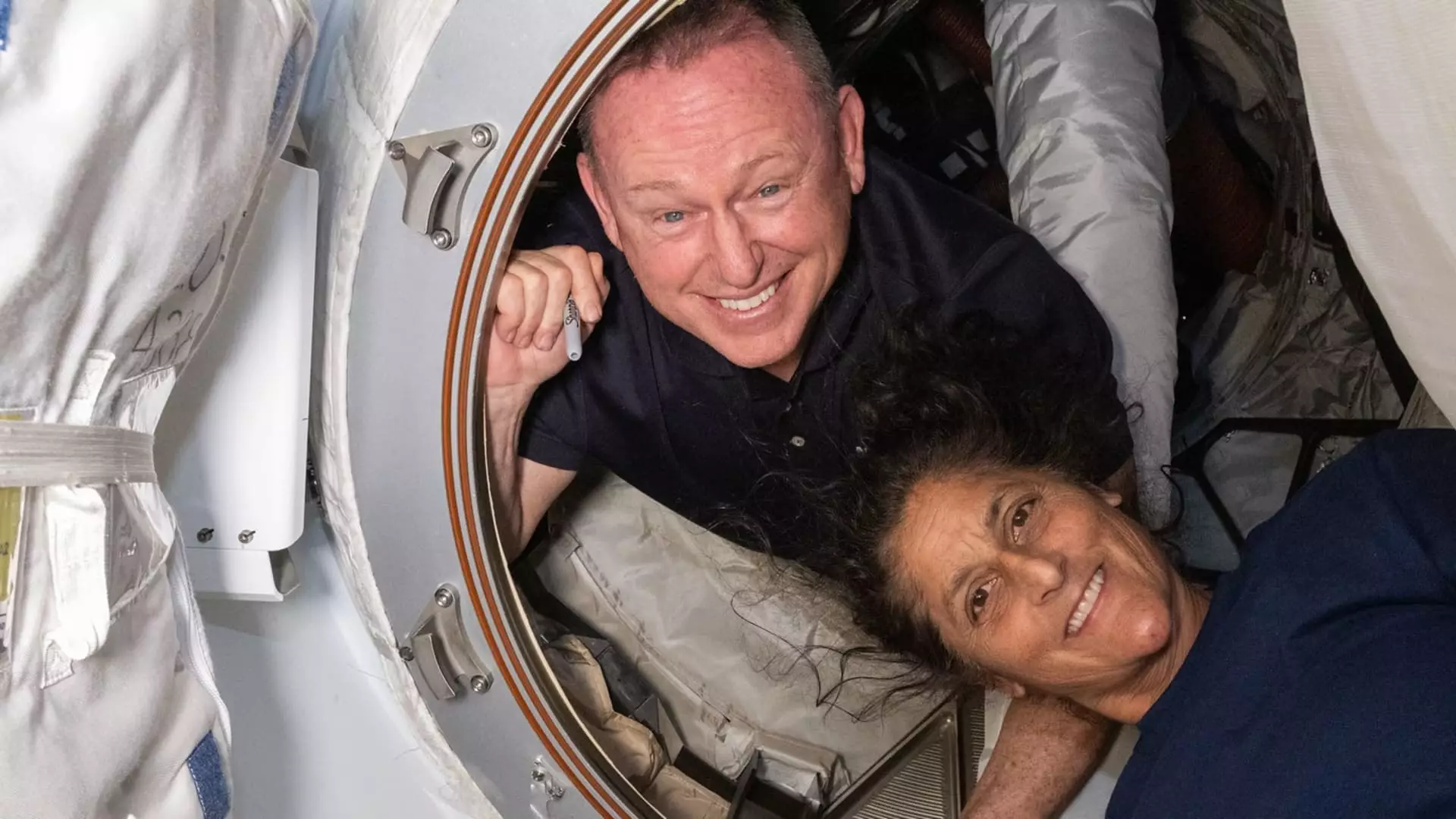The saga of NASA astronauts Butch Wilmore and Suni Williams, who have spent a grueling nine months aboard the International Space Station (ISS), raises profound questions about the intersection of space exploration and political maneuvering. Their story begins with the fateful test launch of the Boeing Starliner capsule, designed to ferry astronauts to and from the ISS. What was meant to be a brief nine-day voyage turned into a drawn-out ordeal after a series of mechanical failures with the Starliner’s thrusters forced NASA to leave them in space far longer than intended. This misadventure represents more than mere technical setbacks; it highlights the dire consequences of intertwining political agendas with scientific missions.
From Overambitious Aspirations to Grounded Realities
NASA’s goal was simple yet ambitious: to establish a dual-vendor system for crew transportation by collaborating with both Boeing and SpaceX. However, the flight is now a testament to Boeing’s inability to meet expectations. With over $2 billion lost on the Starliner program and crucial operational timelines missed, it begs the question: can a company that has historically been a giant in aerospace engineering effectively navigate the complexities of the new commercial space landscape? The juxtaposition of multinational corporations fine-tuning spacecraft design under government contracts illustrates a clash of old-school reliability versus innovative agility, led by the likes of Elon Musk’s SpaceX.
Throughout Wilmore and Williams’ extended stay, they’ve embarked on scientific experiments and participated in routine maintenance aboard the ISS, much like any astronaut on a scheduled mission. The irony here is captivating—these two highly skilled individuals, both Navy veterans, became pawns in a spotlight larger than themselves, woven into the narrative of the U.S. space race that sometimes feels more like a soap opera than a scientific pursuit. The fact remains that they adapted charmingly to their predicament, with Williams asserting they never felt “abandoned,” pointing to their professionalism and dedication, even as serious questions loom over their safety and well-being.
The Political Undercurrents
What is particularly disconcerting is the role politics have played in this scene. President Trump’s influence during the initial phase of the mission saw him urge for a hastier launch of Crew-10 under dubious claims that the astronauts were “stranded” for political reasons. While the astronauts were engaged in valuable work aboard the ISS, this rhetoric was designed to stoke anxieties rather than provide clarity. Such manipulations exploit the heroic image of astronauts and the public’s fascination with space travel to further partisan agendas, turning genuine scientific exploration into political fodder.
With politics entangled in the narrative, it raises important concerns about NASA’s priorities. While the agency seeks to be an independent body focused on science and exploration, political influence threatens to corrupt that mission. Each delay and each tactical decision made to accommodate a political narrative undermines NASA’s credibility. Wilmore and Williams, who represent the pinnacle of achievement, faced an avoidable additional burden stemming from a failure not of their making.
Lessons for Future Endeavors
As we gaze into the future of space exploration, there are lessons to be drawn from this incident. NASA must reaffirm its commitment to science-driven objectives rather than political expediency. Space should unite humanity, not be a platform for gladiatorial politics. The need for transparent decision-making that prioritizes astronaut safety over political optics is paramount. The reliance on a dual-vendor system should not merely serve to contrast different business models; it should promote healthy competition that ultimately benefits scientific progress.
The impending return of Wilmore and Williams on a SpaceX Dragon capsule brings relief but also serves as a cautionary tale. The world watches as America wrestles with its ambitions in space, reminding us of the potential pitfalls of aligning exploratory spirit with political gain. The astronauts’ nine-month sojourn is a testament to their resilience, but it serves as a stark reminder of the risks when exploratory aspirations become mired in the quicksand of political agendas. As we venture further into the unknown, let us hope we steer clear of such turbulence and chart a clearer path toward a future rich with discovery.



Leave a Reply